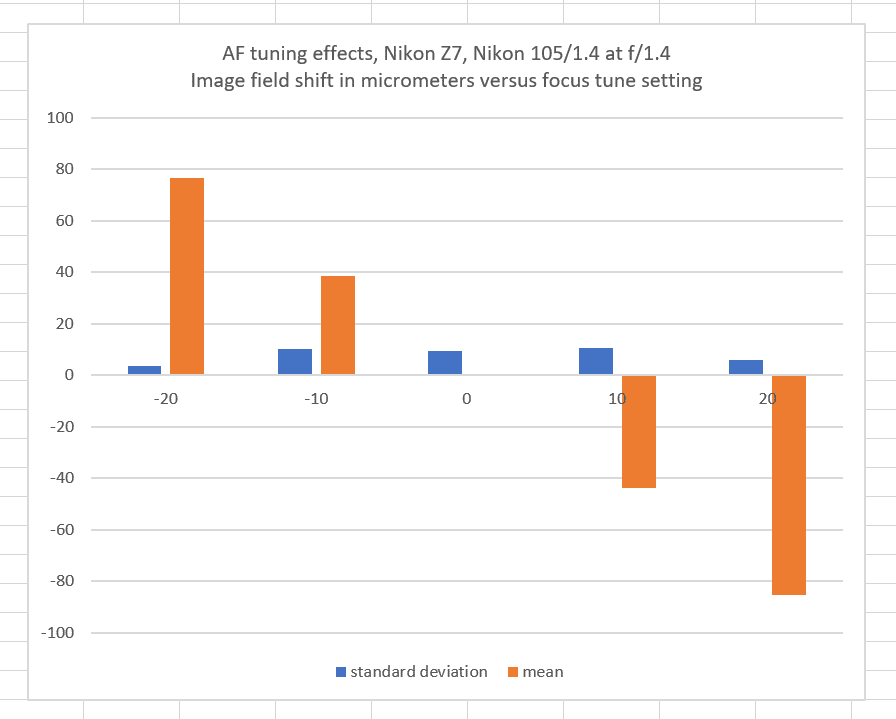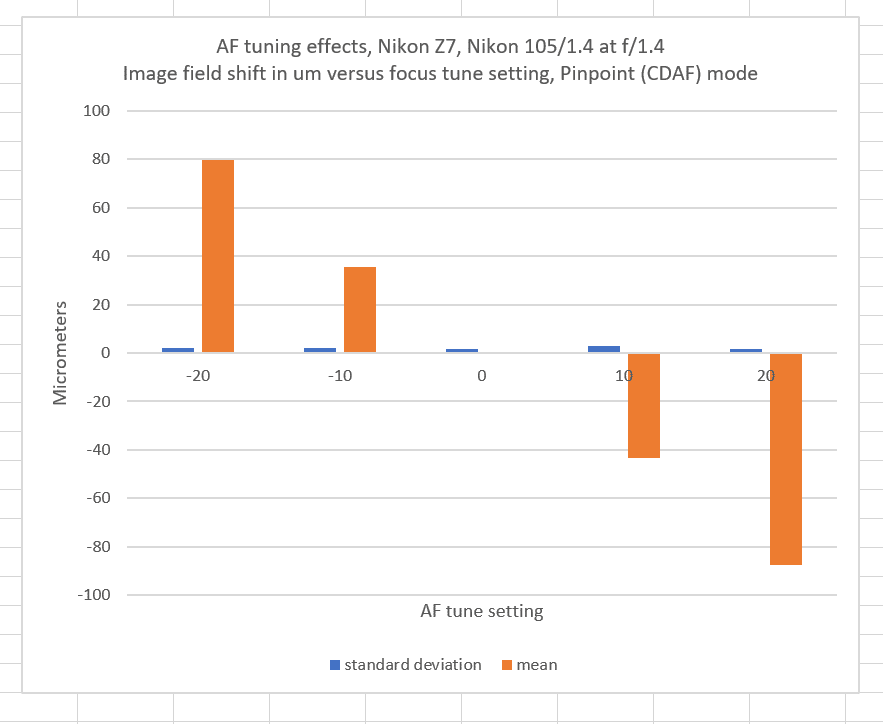This is one in a series of posts on the Nikon Z7. You should be able to find all the posts about that camera in the Category List on the right sidebar, below the Articles widget. There’s a drop-down menu there that you can use to get to all the posts in this series; just look for “Nikon Z6/7”.
In the previous post I started out testing the Z7 for autofocusing accuracy in various focusing modes, but discovered my testing wasn’t valid because I was assuming that there was a CDAF trim step after the cameras PDAF focusing, and it appeared that either that wasn’t happening at all, or it wasn’t very effective.
That caused me to think about the PDAF fine-tuning function in the Z7. I’d figured that it wouldn’t affect accuracy, just speed, in that it would allow the hare-like PDAF phase of the autofocusing to get closer to the correct location so that the tortoise-equivalent CDAF phase would go faster.
But what if there isn’t a CDAF phase, at least with adapted lenses? Then the PDAF fine tuning would affect accuracy, not speed.
I put the 105 mm f/1.4 lens on a Z7, set it up a bit under three meters from my checkerboard ramp, and made 16 exposures in AF-S Single mode with AF fine tuning set to -20, -10, 0, +10, and +20. I racked the lens towards the far on the odd exposures, and in the near direction on the odd ones. I analyzed all the data, and here’s what I saw:
AF fine-tuning does affect accuracy. It affects it in just about the same way as in the D850, with each step changing the image-field focal plane by about 4 micrometers. In the above chart, negative numbers on the y-axis mean object-field focus shift away from the camera. This is the opposite of the usual way I do things. I apologize for the inconsistency.
In Pinpoint mode, which uses CDAF instead of PDAF, the results are similar except for lower scatter:
It’s going to take a while to digest the implications of this.


It has been said that most F-mount lenses are not designed for fast CDAF focusing. I would not be surprised if the camera skipped the CDAF step altogether when using adapted lenses. This would allow adapted lenses to focus with similar speed to what they do on DSLRs. It would be interesting to run this series of tests again with a native lens and also an adapted AF-P lens.
Thanks for all the work you are doing with the Z cameras!